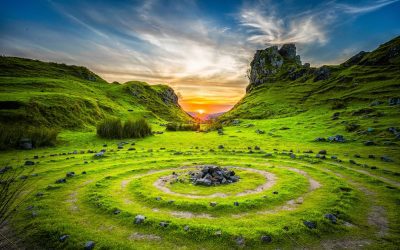History of Kazakhstan
Kazakhstan possesses a rich and diverse history spanning thousands of years. The region was inhabited by nomadic tribes as early as the 1st millennium BC, with evidence of early human settlement found in the form of ancient petroglyphs and archaeological sites. The...
Population Density of Kazakhstan
Population density refers to the number of people living in a specific area, typically measured in square kilometres or square miles. It is a crucial demographic indicator that offers insights into the distribution of people within a country or region. In Kazakhstan,...
Natural Resources of Kazakhstan: Where Natural Resources are located In Kazakhstan
Kazakhstan, the ninth largest country in the world, is abundant in natural resources. The nation’s diverse landscape encompasses vast steppes, deserts, mountains and forests, which harbour a wide variety of natural assets. Kazakhstan’s natural resources...
Cultural or Historical Sites of Kazakhstan: Important Cultural Landmarks or Historical Sites In Kazakhstan
Kazakhstan, the ninth largest country in the world, boasts a rich cultural and historical heritage. The nation is home to a diverse array of cultural and historical sites that reflect its long and varied past. From ancient mausoleums to stunning natural landscapes,...
Political Boundaries of Jordan: Provinces, Districts, or Historical Boundaries.
Jordan, officially known as the Hashemite Kingdom of Jordan, is a country located in the Middle East, bordered by Saudi Arabia to the south and east, Iraq to the north-east, Syria to the north, and Israel and Palestine to the west. The country has a rich history and...
Terrain and Topography of Jordan: mountains, valleys, and plains.
Jordan is a country located in the Middle East, with a diverse and varied terrain and topography that makes it a unique and fascinating destination for travellers and nature enthusiasts. The country is home to a wide range of landscapes, including majestic mountains,...
Climate Zones of Jordan: Different climate regions Of Jordan
Jordan is a country located in the Middle East, with a diverse range of climate zones due to its varied topography and geographical location. The climate in Jordan can be classified into several distinct regions, each with its own unique characteristics and weather...
History of Jordan
Jordan has a rich and diverse history that dates back to ancient times. The region that is now Jordan was home to several ancient civilizations, including the Ammonites, Edomites, and Moabites. These ancient peoples left behind a wealth of archaeological treasures,...
Natural Resources of Jordan: Where Natural Resources are Located in Jordan
Jordan is a country rich in natural resources, despite its arid climate and limited land area. The country is strategically located in the Middle East, sharing borders with Israel, Syria, Iraq, and Saudi Arabia. Jordan‘s natural resources include water,...
Cultural or Historical Sites of Jordan: Important Cultural Landmarks or Historical Sites In Jordan
The ancient city of Petra, nestled in the rugged mountains of southern Jordan, is a UNESCO World Heritage Site and one of the most iconic archaeological sites in the world. Known as the “Rose City” due to the pink hue of its rock-cut architecture, Petra...
Population Density of Jordan
Jordan is a small country located in the Middle East, with a population density of around 113 people per square kilometer. The population density in Jordan is unevenly distributed, with the majority of the population concentrated in urban areas such as the capital...
Jordan
Jordan (Al-Mamlakah al-Urduniyyah al-Hāshimiyyah (Hashemite Kingdom of Jordan)) Capital: Amman Population (Estimated July 2012): 6,508,887 Area: 88,778 km2 or 34,277 mi2 Currency: Jordanian Dinar (JD) Official Language: Arabic Political Information: Constitutional...











